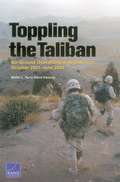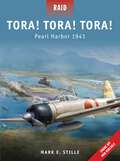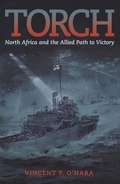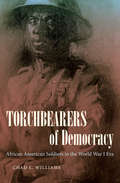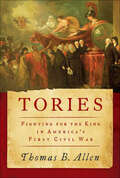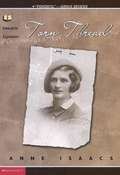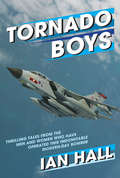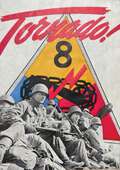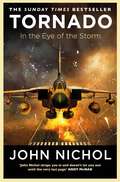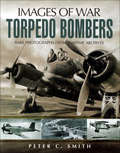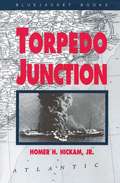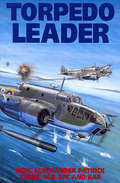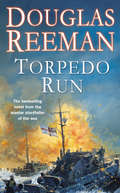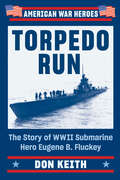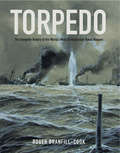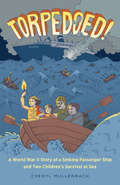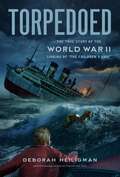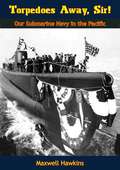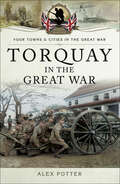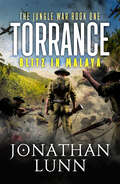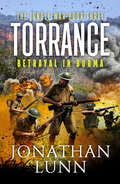- Table View
- List View
Toppling Qaddafi
by Christopher S. ChivvisToppling Qaddafi is a carefully researched, highly readable look at the role of the United States and NATO in Libya's war of liberation and its lessons for future military interventions. Based on extensive interviews within the US government, this book recounts the story of how the United States and its European allies went to war against Muammar Qaddafi in 2011, why they won the war, and what the implications for NATO, Europe, and Libya will be. This was a war that few saw coming, and many worried would go badly awry, but in the end the Qaddafi regime fell and a new era in Libya's history dawned. Whether this is the kind of intervention that can be repeated, however, remains an open question - as does Libya's future and that of its neighbors.
Toppling the Taliban
by Walter L. Perry David KassingOn September 11, 2001, the United States was without a plan for military operations in Afghanistan. One was quickly created by the Defense Department and operations began October 7. The Taliban was toppled in less than two months. This report describes preparations at CENTCOM and elsewhere, Army operations and support activities, building a coalition, and civil-military operations in Afghanistan from October 2001 through June 2002.
Tora! Tora! Tora! - Pearl Harbor 1941
by Jim Laurier Mark StilleThe Japanese assault on Pearl Harbor is one of the most famous raids in history, if not the most famous. In the early hours of December 7, 1941, the carriers and aircraft of the Japanese First Air Fleet launched a sudden and unexpected attack on the US naval forces anchored in Pearl Harbor, hoping to cripple America's naval capabilities in one decisive blow.This new study by Mark Stille will address the build-up to, execution of, and fallout from the Pearl Harbor operation. Putting the raid in context, the political and military background will be addressed - Japanese expansion in the Far East, and American responses to it, and the steady increase in tensions between the two powers. The Japanese decision to launch an assault on Pearl Harbor will be considered in detail, from the time constraints faced in planning the raid, alternative operational possibilities, and the bold, stubborn leadership of Admiral Isoruku Yamamoto, who was the driving force behind the concept and planning, to the final adoption of the operation, and its place in Japan's national strategy. It is an illuminating new look at one of the most infamous events in modern history.From the Trade Paperback edition.
Torch: North Africa And The Allied Path To Victory
by Vincent O'Hara"World War II had many superlatives, but none like Operation Torch--a series of simultaneous amphibious landings, audacious commando and paratroop assaults, and the Atlantic’s biggest naval battle, fought across a two thousand mile span of coastline in French North Africa. The risk was enormous, the scale breathtaking, the preparations rushed, the training inadequate, and the ramifications profound. Torch was the first combined Allied offensive and key to how the Second World War unfolded politically and militarily. Nonetheless, historians have treated the subject lightly, perhaps because of its many ambiguities. As a surprise invasion of a neutral nation, it recalled German attacks against countries like Belgium, Norway, and Yugoslavia. The operation’s rationale was to aid Russia but did not do this. It was supposed to get Americans troops into the fight against Germany but did so only because it failed to achieve its short-term military goals. There is still debate whether Torch advanced the fight against the Axis, or was a wasteful dispersion of Allied strength and actually prolonged the war. Torch: North Africa and the Allied Path to Victory is a fresh look at this complex and controversial operation. The book covers the fierce Anglo-American dispute about the operation and charts how it fits into the evolution of amphibious warfare. It recounts the story of the fighting, focusing on the five landings--Port Lyautey, Fédala, and Safi in Morocco, and Oran and Algiers in Algeria--and includes air and ground actions from the initial assault to the repulse of Allied forces on the outskirts of Tunis. Torch also considers the operation’s context within the larger war and it incorporates the French perspective better than any English-language work on the subject. It shows how Torch brought France, as a power, back into the Allied c& how it forced the English and the Americans to work together as true coalitions partners and forge a coherent amphibious doctrine. These skills were then applied to subsequent operations in the Mediterranean, in the English Channel, and in the Pacific. The story of how this was accomplished is the story of how the Allies brought their power to bear on the enemy’s continental base and won the Second World War. "
Torchbearers of Democracy African American Soldiers In The World War I Era
by Patricia Sullivan Chad L. Williams Waldo E. Martin Jr.On April 2, 1917, Woodrow Wilson thrust the United States into World War I by declaring, "The world must be made safe for democracy. " For the 380,000 African American soldiers who fought and labored in the global conflict, these words carried life or death meaning. Relating stories bridging the war and postwar years, spanning the streets of Chicago and the streets of Harlem, from the battlefields of the American South to the battlefields of the Western Front, Chad L. Williams reveals the central role of African American soldiers in World War I and how they, along with race activists and ordinary citizens alike, committed to fighting for democracy at home and beyond. Using a diverse range of sources, Williams connects the history of African American soldiers and veterans to issues such as the obligations of citizenship, combat and labor, diaspora and internationalism, homecoming and racial violence, "New Negro" militancy, and African American historical memories of the war. Democracy may have been distant from the everyday lives of African Americans at the dawn of the war, but it nevertheless remained a powerful ideal that sparked the hopes of black people throughout the country for societal change. Torchbearers of Democracyreclaims the legacy of black soldiers and establishes the World War I era as a defining moment in the history of African Americans and peoples of African descent more broadly.
Tories: Fighting for the King in America's First Civil War (National Geographic Remember Ser.)
by Thomas B. AllenAn “evocatively written examination” of the Americans who fought alongside the British during the American Revolution (American Spectator).The American Revolution was not simply a battle between the independence-minded colonists and the oppressive British. As Thomas B. Allen reminds us, it was also a savage and often deeply personal civil war, in which conflicting visions of America pitted neighbor against neighbor and Patriot against Tory on the battlefield, on the village green, and even in church.In this outstanding and vital history, Allen tells the complete story of the Tories, tracing their lives and experiences throughout the revolutionary period. Based on documents in archives from Nova Scotia to London, Tories adds a fresh perspective to our knowledge of the Revolution and sheds an important new light on the little-known figures whose lives were forever changed when they remained faithful to their mother country.
Torn Country: An Oral History of the Israeli War of Independence
by Lynne Reid Banks"Torn Country" is not so much a history of the Arab-Israeli war but rather a series of recollections and assessments of it by participants. Banks collected interviews and arranged them, to give as clear a picture of the events that took place as possible through the memories and in the words of a wide variety of people who remember them -- sometimes as if they happened yesterday, more often with perspective: events that shaped Jewish history.
Torn Thread
by Anne IsaacsPraise for ) anne isaacs' Torn Thread "Every word . . . rings as true as any first-person story told by an actual survivor, giving young readers another powerful testament to the horrors of the Holocaust." - Kirkus Reviews, pointered review "A riveting account. . . . This powerful testament to the human spirit provides much opportunity for discussion of this dark time in human history." SfetSeliBatlJbniry Journal - Booklist tells it without exploitation or sentimentality." "The power of the human spirit provides a solid foundation for this Holocaust novel." - Voice of Youth Advocates
Torn Thread
by Anne IsaacsA searing Holocaust novel based on a true story. Twelve-year-old Eva and her sister have been forced to leave their home in Poland and are imprisoned in a Nazi labor camp. There they must spin thread on treacherous machinery to make clothing and blankets for the German Army. As Eva struggles amid ever worsening dangers to save her life and that of her sick sister, readers witness how two teenagers strive to create home and family amidst inhumanity and chaos. Written in exquisite prose, this story of heartbreak and hope that is rich in detail and symbolism will deeply move readers of all ages.
Tornado Boys: Thrilling Tales From The Men And Women Who Have Operated This Indomitable Modern-day Bomber (The\jet Age Ser. #12)
by Ian HallThe RAF veteran and author of Fast Jets and Other Beasts shares stories from the men and women who have flown the combat aircraft. With the introduction of female pilots to the RAF in 1994, the Tornado was the first aircraft to be flown by both men and women. Another aspect distinguishing this book from the rest of the series is that it covers an aircraft which is still in active service, especially as a key player in current Middle East operations. With focus on the GR1/GR4 versions of the Tornado, readers will get to see what it is like to operate this bomber/reconnaissance aircraft against the backdrop of modern-day scenarios. The book begins in the 1970s with stories from operators and ground crew using the Tornado as a Cold War nuclear deterrent, and continues with tales of later &“hot&” wars as in both Gulf conflicts and in Kosovo. There are also stories of Scud hunting in Iraq and Red Flag exercises in the United States, as well as of a stunning competition victory over the USAF&’s Strategic Air Command in their own backyard. The short-lived anti-shipping role is not neglected. With the transformation of the Tornado to the GR4 standard, the book continues with chapters covering active service supporting Britain&’s increasingly complex international commitments and the employment of new weaponry and sensors. All in all, through the eyes of men and women who have operated this extraordinary aircraft, the volume presents an entertaining and illuminating series of tales and anecdotes. These light and informative stories come from those who were proud to serve on and loved to operate the impressively versatile Tornado.
Tornado! The Story Of The 8th Armored Division
by United States ArmyTornado! The Story of the 8th Armored Division by the United States Army is a riveting and detailed account of the heroic exploits and contributions of the 8th Armored Division during World War II. Known as the "Tornado Division" due to its speed, power, and relentless drive, this unit played a crucial role in the Allied victory, earning a distinguished place in military history.This book meticulously chronicles the formation, training, and combat operations of the 8th Armored Division, from its activation in 1942 to its significant engagements across Europe. Through vivid narrative and firsthand accounts, readers are taken on a journey from the division's early days of rigorous preparation in the United States to the fierce battles that defined its legacy in the European Theater of Operations.Tornado! highlights the division's participation in key operations, including the crossing of the Rhine, the liberation of concentration camps, and the rapid advances through Germany that helped bring an end to the war in Europe. The book captures the bravery, camaraderie, and sacrifice of the soldiers who served in the 8th Armored Division, offering an in-depth look at their experiences on the front lines.In addition to combat stories, the book provides insights into the logistics, strategy, and leadership that guided the division through some of the most intense fighting of the war. It also includes maps, photographs, and other visual aids that help bring the division's story to life.Tornado! The Story of the 8th Armored Division is an essential read for military historians, veterans, and anyone interested in the remarkable achievements of this storied division. The book serves as a tribute to the men of the 8th Armored Division, honoring their courage, dedication, and contributions to the Allied victory in World War II. This comprehensive and well-documented account ensures that the legacy of the Tornado Division will never be forgotten.
Tornado: In the Eye of the Storm
by John NicholFormer Tornado Navigator John Nichol tells the incredible story of the RAF Tornado force during the First Gulf War in 1991; the excitement and the danger, the fear and the losses. It is an extraordinary account of courage and fortitude.&‘We were doing about 620 miles-per-hour, 200 feet above the desert, in total darkness. Everything was running on rails as we approached the target. Then all hell broke loose. I remember the missile being fired at us; I broke left and shouted, &“Chaff!&” &‘All I could see was a flame, like a very large firework, coming towards me. Then there was a huge white flash. I remember an enormous wind and then I was knocked unconscious. My last thoughts were that I was going to die.&’In 1990, Iraqi dictator Saddam Hussein ordered the invasion and occupation of neighbouring Kuwait, setting in motion a chain of events that had unimaginable political, military and personal repercussions, which still reverberate around the globe today.This is the story of the aircrew at the heart of Operation Desert Storm, almost none of whom had any prior experience of armed combat. It is the story of the Tornado&’s missions, of those who did not return - and of the families who watched and waited as one of the most complex conflicts in recent history unfolded live on television. It is a story of untold fear and suffering, and astounding courage in the face of hitherto unimaginable adversity.
Torpedo Bombers (Images of War)
by Peter C. SmithThis is a highly illustrated history one of the most deadly types of atta aircraft. The torpedo bomber first appeared during the later years of World War One but served their most useful role in the Second World War. The most famous attas include Taranto, where Fairey Swordfish destroyed the Italian Battle fleet and the infamous surprise atta on Pearl Harbor by the Japanese. In both these cases the attas were against ships laying in harbor and therefore stationary. Heavy defensive anti-aircraft fire was the greatest danger to the torpedo bombers in those circumstances but ships under way in the open sea had far more room to take evasive action. The lengthy time it took a torpedo to reach its target allowed many ships to escape destruction. However notable exceptions were the sinking HMS Prince of Wales and HMS Repulse by the Japanese during the early stages of the war in the Far East. During the hunt for the Bismar it was an air-launched torpedo from a Swordfish that severely damaged the ships steering gear and enabled the Royal Navy to close in for the final kill. Some of the types included are the Fairey Swordfish, Bristol Beaufort, Fairey Albacore, Bristol Beaufighter, Heinkell He 115, Marchetti SM.79, Fokker T.VIII, Grumman Avenger and the Nakajima B5N.
Torpedo Junction
by Homer Hickam Jr.Slaughter at sea-just miles from U.S. soil!In 1942 German U-boats turned the shipping lanes off Cape Hatteras into a sea of death. Cruising up and down the U.S. eastern seaboard, they sank 259 ships, littering the waters with cargo and bodies. As astonished civilians witnessed explosions from American beaches, fighting men dubbed the area "Torpedo Junction." And while the U.S. Navy failed to react, a handful of Coast Guard sailors scrambled to the front lines. Outgunned and out-maneuvered, they heroically battled the deadliest fleet of submarines ever launched. Never was Germany closer to winning the war.In a moving ship-by-ship account of terror and rescue at sea, Homer Hickam chronicles a little-known saga of courage, ingenuity, and triumph in the early years of World War II. From nerve-racking sea duels to the dramatic ordeals of sailors and victims on both sides of the battle, Hickam dramatically captures a war we had to win-because this one hit terrifyingly close to home.
Torpedo Leader
by Patrick GibbsA WWII wing commander&’s &“adrenaline-charged account of torpedo attacks a few feet above the sea&” (The Daily Telegraph). In this vivid and very personal story, written during World War II at the height of action, Patrick Gibbs expresses the frustrations, triumphs, and disasters he experienced in his roles as both a staff officer in Cairo and a Beaufort flight commander on the anti-shipping operations from Malta in 1942. With photographs and maps included, this is an exciting inside look at the world of military aviation and one man&’s view of the war.
Torpedo Run
by Douglas ReemanIt was in 1943. On the Black Sea, the Russians were fighting a desperate battle to regain control. But the Russians' one real weakness was on the water: whatever they did, the Germans did it better, and the daring hit-and-run tactics of the E-boats plagued them.At last the British agreed to send them a small flotilla of motor torpedo boats under the command of John Devane. More than a veteran, he was a survivor - and the two rarely went together in the savage war of MTBs. Devane soon learned that, even against the vast and raging background of the Eastern Front, war could still be a personal duel between individuals.______________________________A classic tale of naval warfare from Douglas Reeman, the all-time bestselling master of naval fiction, who served with the Royal Navy on convoy duty in the Atlantic, the Arctic and the North Sea. He has written dozens of naval books under his own name and the pseudonym Alexander Kent, including the famous Richard Bolitho books set during the Napoleonic Wars.
Torpedo Run: The Story of WWII Submarine Hero Eugene B. Fluckey (American War Heroes)
by Don KeithThe remarkable true story of Eugene Fluckey, the US Navy&’s most innovative—and aggressive—submarine commander of World War II Over the course of five combat patrols during the Pacific War, Commander Fluckey reinvented submarine warfare, pioneering audacious strategies to hunt and sink Japanese warships and merchant vessels. At the helm of the USS Barb, he directed his boat to attack warship convoys—never mind the lop-sided odds—and to slip into heavily defended enemy harbors to launch torpedoes at unsuspecting targets. &“Lucky&” Fluckey&’s submariners often attacked from the surface, brazenly sinking the enemy with the Barb&’s deck guns. Once, he even sent sailors ashore on one Japanese island on a perilous mission to blow up a Japanese train. Fluckey and his crew sent an astounding seventeen enemy ships, including an aircraft carrier, to the bottom of the sea. In Torpedo Run, acclaimed naval historian Don Keith dives into the most thrilling and dangerous tales of Fluckey&’s war, as he guides his gallant crew against the Japanese fleet. For his heroism and intrepidity, Fluckey earned four Navy Crosses and the Medal of Honor, and showed what a submarine—and he—was capable of.
Torpedo: Inventing the Military-Industrial Complex in the United States and Great Britain
by Katherine C. EpsteinWhen President Eisenhower referred to the "military-industrial complex" in his 1961 Farewell Address, he summed up in a phrase the merger of government and industry that dominated the Cold War United States. In this bold reappraisal, Katherine Epstein uncovers the origins of the military-industrial complex in the decades preceding World War I, as the United States and Great Britain struggled to perfect a crucial new weapon: the self-propelled torpedo. Torpedoes threatened to upend the delicate balance among the world's naval powers, they were bought and sold in a global marketplace, and they were cutting-edge industrial technologies. But building them required substantial capital investments and close collaboration among scientists, engineers, businessmen, and naval officers. To address these formidable challenges, the U. S. and British navies created a new procurement paradigm: instead of buying finished armaments from the private sector or developing them from scratch at public expense, they began to invest in private-sector research and development. The inventions emerging from torpedo R&D sparked legal battles over intellectual property rights that reshaped national security law. Torpedo blends military, legal, and business history with the history of science and technology to recast our understanding of defense contracting and the demands of modern warfare.
Torpedo: The Complete History of the World's Most Revolutionary Naval Weapon
by Roger Branfill-CookAn encyclopedic study of the ship-killer par excellence—from its development to post-World War II usage. &“A well-written book, lavishly illustrated.&” —International Journal of Maritime History The torpedo was the greatest single game-changer in the history of naval warfare. For the first time it allowed a small, cheap torpedo-firing vessel—and by extension a small, minor navy—to threaten the largest and most powerful warships afloat.The traditional concept of seapower, based on huge fleets of expensive capital ships, required radical rethinking because of this important naval weapon. This book is a broad-ranging international history of the weapon, tracing not only its origins and technical progress down to the present day, but also its massive impact on all subsequent naval wars. Torpedo contains much new technical information that has come to light over the past thirty years and covers all of the improved capabilities of the weapon. Heavily illustrated with photos and technical drawings this is a book no enthusiast or historian can afford to miss.&“The torpedo—one of the most fearsome weapons ever created by man—is well worth its own history.&” —Forum Navale
Torpedoed!: A World War II Story of a Sinking Passenger Ship and Two Children's Survival at Sea
by Cheryl MullenbachWhen 14-year-old Florence Kelly and 11-year-old Russell Park left their hometowns for summer vacations in Europe in 1939, they considered themselves awfully lucky. Many of their friends' families were struggling during the Great Depression and couldn't afford fancy trips. But the young pair would soon face life-threatening troubles of their own as it became clear German dictator Adolf Hitler was intent on invading neighboring countries.With tensions high, Florence, Russell, and their families cut their holidays short as many Americans scrambled to book passage back to the States. Safely aboard the luxurious passenger liner the S.S. Athenia, travelers settled in and breathed a sigh of relief. Surely, it was believed, the sleek, menacing German U-boats lurking in the Atlantic Ocean would never attack a passenger ship . . . would they? Torpedoed! vividly re-creates the events surrounding the attack on the Athenia, the first ship lost in the battle of the Atlantic. Through firsthand accounts, interviews with survivors, and powerful photos, award-winning author Cheryl Mullenbach brings to life the prewar environment in America and Europe, the anxious days leading up to the surprise attack, the frantic rush to escape the sinking ship, and the long, terrifying night that Russell, Florence, and others spent in churning lifeboats battling the elements and imagining the worst. At once a gripping adventure story and a rich resource for history lovers, Torpedoed! provides page-turning thrills and inspiring real-life examples of courage and resourcefulness in the toughest of circumstances.
Torpedoed: The True Story of the World War II Sinking of "The Children's Ship"
by Deborah HeiligmanFrom award-winning author Deborah Heiligman comes Torpedoed, a true account of the attack and sinking of the passenger ship SS City of Benares, which was evacuating children from England during WWII. Amid the constant rain of German bombs and the escalating violence of World War II, British parents by the thousands chose to send their children out of the country: the wealthy, independently; the poor, through a government relocation program called CORB. In September 1940, passenger liner SS City of Benares set sail for Canada with one hundred children on board.When the war ships escorting the Benares departed, a German submarine torpedoed what became known as the Children's Ship. Out of tragedy, ordinary people became heroes. This is their story.This title has Common Core connections.
Torpedoes Away, Sir!: Our Submarine Navy in the Pacific
by Maxwell HawkinsTORPEDOES AWAY, SIR! is the story of our submarine navy in the Pacific during the first eighteen months of the Japanese war. Anecdotes are told about real men and real submarines. Besides painting a vivid picture of the exciting underwater warfare and of the heroism of our submariners, TORPEDOES AWAY, SIR! gives an accurate, clear description of an actual submarine.The illustrations include about thirty official U.S. Navy photographs, some of them pictures of the very submarine described, and a map with the places mentioned clearly marked.Maxwell Hawkins, the author, gathered the material for this interesting book by doing extensive research in the archives of the Navy Department and also by questioning the submariners themselves about their experiences in the Pacific.Being a newspaperman who knows that profession from reporter to newsstand, Mr. Hawkins is well qualified to give an accurate account of the exciting adventures of our men in the submarine service.
Torquay in the Great War: Torquay In The Great War (Your Towns & Cities in the Great War)
by Alex PotterIn 1914 Torquay was the crown jewel of the English Riviera, long the haunt of the rich and famous but this status was not to last. The Great War of 1914–1918 brought a shuddering end to this golden period in amongst the blood and mud of the Western Front as hundreds of Torquinians gave their lives in the fight against the Kaiser. This book documents the town's experience, both militarily and socially through the extensive use of previously unpublished letters from those who served, by following the career of General Sir Herbert Plumer, commander of the British Second Army and native Torquinian and by featuring a detailed analysis of the home front throughout the war. In doing so it challenges many of the war's myths including the idea of war enthusiasm in 1914, widespread opposition to the war and the old myth of lions led by donkeys. In doing so it reveals the extent to which even a small town such as Torquay contributed to the war effort and how much the war permanently changed Torquay.
Torrance: A completely gripping WW2 adventure (Jungle War)
by Jonathan LunnThe endless jungle. A relentless foe. No way out. From the bestselling author of the Kemp archery novels.World War II, Malaya, 1942: Charlie Torrance, a private in the Argyll and Sutherland Highlanders, is plunged into the maelstrom of war after a blitzkrieg Japanese invasion. Suddenly, a sweltering but otherwise uneventful posting in the Malayan jungle becomes a living nightmare.But when his group stumbles upon some mysterious documents, their plight takes a turn for the worse. Torrance is pursued remorselessly by the indomitable Captain Mitsumoto, who will stop at nothing to retrieve the papers.As the British Empire crumbles amidst the mosquitos, rubber plantations and whip cracking bullets, even surviving will feel like victory...A stunning, brutal, blood-soaked military thriller,perfect for fans of Jack Higgins, Mark Sullivan, and Alistair MacLean. Praise for Jonathan Lunn'Full-blooded action. Simply superb' Northern Echo'A rollicking tale with plenty of punches.' Lancashire Evening Post
Torrance: Betrayal in Burma
by Jonathan LunnSave their lives, but trust no one… Torrance is back and fighting for his life. Burma, 1942: In the face of a relentless Japanese advance, the British Army is in headlong retreat.Given command of a squad of defaulters, Corporal Charlie Torrance is tasked with escorting a notorious political prisoner to captivity in India. But a Japanese intelligence agent has joined forces with Burmese independence fighters intent on rescuing their comrade.And it’s starting to look as though there could be a traitor in Torrance’s squad…As the British Empire crumbles, Torrance will be forced to question everything he’s fighting for when he makes a bloody last stand in the sultry Burmese jungle.Inspired by actual events, Torrance: Betrayal in Burma is a blistering adventure in the best traditions of Alistair MacLean and Bernard Cornwell.

